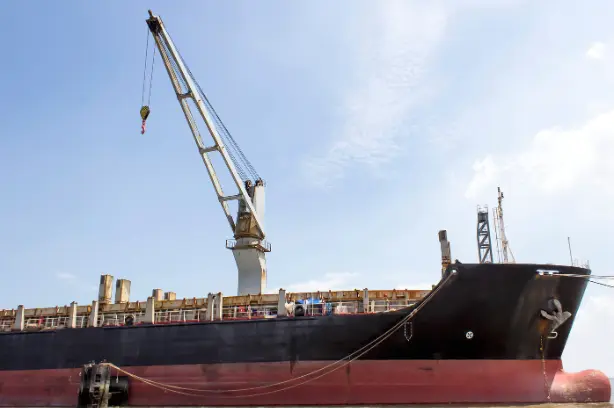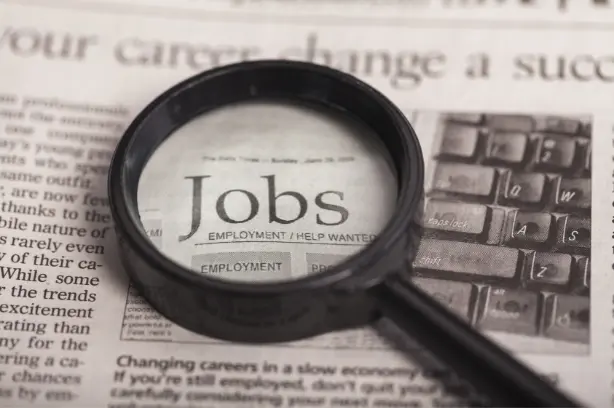By Preserve Gold Research
In July 2025, the new administration’s ambitious “One Big Beautiful Bill” was signed into law amid fanfare and controversy. Touted by supporters as a means to “permanently lower taxes for families and job creators” and make government more efficient, this sweeping package extends major tax cuts and boosts spending on defense, border security, and other priorities. Yet lurking beneath the promised tax relief is an unwelcome side-effect: inflation. Many economists warn that Americans will ultimately pay for the bill’s generous tax cuts and spending through this hidden tax that could hit every household. While the legislation is a boon for the wealthy and corporations, the average American may find themselves struggling to keep up with rising prices.
What’s in the “Big Beautiful Bill”?
President Trump’s One Big Beautiful Bill Act of 2025 (nicknamed the “big, beautiful bill”) delivers a sprawling overhaul of taxes and spending. Passed by narrow margins in Congress and signed into law by July 4, 2025, the act makes permanent most provisions of the 2017 Tax Cuts and Jobs Act and introduces new tax breaks. Key features include:
- Permanent Tax Cuts: The bill locks in lowered individual income tax rates and a larger standard deduction from the 2017 reforms. It also permanently extends a 20% deduction for pass-through business income and doubles the estate tax exemption, among other tax reductions benefiting businesses and wealthy estates.
- New Tax Breaks and Credits: It adds novel exemptions like no income tax on overtime pay and tip income, and a deduction for auto loan interest. It creates “Trump Accounts” (tax-advantaged savings accounts with government seed money for newborns) and a scholarship donation tax credit. While marketed as relief for working families, many of these perks are narrowly targeted and complex.
- Spending Increases: Despite the tax cuts, the act boosts federal spending in certain areas. It authorizes significant funding for the military (e.g., border wall construction and modernizing defense systems) and tightens immigration enforcement. It also raises the cap on the State and Local Tax (SALT) deduction (temporarily from $10k to $40k) to appease lawmakers from high-tax states.
In sum, the “Big Beautiful Bill” mixes tax relief with selective spending initiatives. Supporters argue these policies will stimulate economic growth and ultimately make the government work more efficiently for all Americans. However, independent analyses paint a different picture of the bill’s cost. The nonpartisan Congressional Budget Office (CBO) estimates the law will add roughly $3.4 trillion to federal deficits over the next decade. Similarly, the Tax Foundation calculates a net increase of about $3.0 trillion in deficits through 2035, even after accounting for optimistic economic growth feedback. In other words, the government will be borrowing trillions more due to this bill.
Such “borrow-and-spend” fiscal expansion is virtually unprecedented outside of wartime or recession. Coming at a time when the national debt already exceeds 100% of GDP, the bill’s cost has alarmed budget watchdogs. “It’s really striking that this bill is both as fiscally irresponsible as it is and regressive,” remarked Daniel Hornung, a former economic advisor, noting how people making under $50,000 could actually see their incomes fall “to finance tax cuts for largely high-income people.”
The Hidden Tax on Americans
Inflation is the general rise in prices of goods and services over time, which slowly erodes the purchasing power of each dollar. When inflation rises, consumers find that the same paycheck covers fewer groceries, gas, and other necessities. But inflation doesn’t affect everyone equally; it often behaves like a regressive (and hidden) tax. Unlike an explicit tax, no law is passed to levy it, yet people’s wealth is subtly siphoned away as prices climb.
“Inflation is taxation without legislation.” – Nobel Prize-winning economist Milton Friedman
This famous quote from Milton Friedman captures the essence of inflation as an invisible tax on the public. When the government or other forces inject excessive money or demand into the economy, prices tend to rise. No politician votes for higher grocery bills, but that can be the outcome. As the nonpartisan Tax Foundation group aptly explains, inflation “leaves taxpayers less well-off due to higher costs and ‘bracket creep,’ while increasing the government’s spending power.” In other words, as prices inflate, consumers pay more for the same items (like a tax hike on consumption), and any income gains can be pushed into higher tax brackets without real enrichment. Meanwhile, the government’s debt burden is effectively lightened because it repays creditors in cheaper dollars—a dynamic that benefits the Treasury at everyone else’s expense.
Equally concerning, the burden of this inflation tax falls more heavily on certain groups. Lower- and middle-income households tend to suffer more from rising prices than wealthy households. Why? Poor and middle-class families spend a larger portion of their income on essentials like food, gasoline, rent, and utilities (items that often see sharp inflation spikes). A recent Congressional Budget Office report confirmed that prices for goods consumed by the lowest-income families have risen faster than those for higher-income families in the current inflation wave. When eggs, milk, and electricity bills jump in price, it squeezes those living paycheck to paycheck. Wealthier individuals are somewhat cushioned; they spend a smaller fraction of their income on basic needs and may even benefit from inflation if they hold assets or debts (for instance, fixed-rate mortgage debt is easier to pay off with inflated wages).
Inflation is not just an abstract economic concept; it hits home, literally. Consider the recent bout of high inflation the U.S. experienced from 2021 through 2023. Over that period, consumer prices surged over 15% cumulatively, the steepest increase in four decades. Wages did rise, but not as fast, meaning real purchasing power declined for most workers. One estimate by the House Ways and Means Committee found that this inflation “has cost the average American family $10,000” in higher expenses as of mid-2023. That is money effectively taken out of family budgets, equivalent to a $10,000 tax increase, without any new law being passed by Congress.
How Fiscal Policy Can Stoke Inflation
To grasp why many analysts are concerned, we need to connect the dots between big fiscal deficits and rising inflation. The chain of reasoning, simplified, is as follows:
- Deficit-Financed Tax Cuts & Spending: The bill’s tax cuts mean the government takes in much less revenue, while its spending provisions add costs. Unless offset by other savings (which, in this case, they largely aren’t), the result is a significantly larger budget deficit. For example, extending the 2017 tax cuts and adding new breaks will reduce revenue by an estimated $5 trillion over 10 years, and even after spending cuts and rosy growth effects, the U.S. will likely borrow around an extra $3 trillion or more. Essentially, the government is injecting money into the economy by letting people keep more of their income (tax cuts) and by directly funding programs, but it isn’t “paying for” much of it through higher taxes or other spending cuts.
- Increased Borrowing and Money Supply: To cover these deficits, the U.S. Treasury must issue government bonds. These bonds have to be bought by someone: banks, investors, or possibly the Federal Reserve. If investors absorb the bonds, they will demand higher interest rates (we’ll discuss this later). If the central bank ends up buying a substantial share (directly or indirectly), it is effectively creating new money to finance the deficit. Historically, big deficits often lead to some degree of money creation. During World War II, for instance, the Fed actively purchased Treasury debt to help finance wartime spending, and the money supply surge contributed to prices rising 87% over that decade. More recently, during the 2020 pandemic, the U.S. ran multi-trillion-dollar deficits financed heavily by Fed bond-buying (“quantitative easing”), which many believe set the stage for the post-pandemic inflation spike.
- Demand Outpacing Supply: When you put more money into people’s pockets (via tax cuts or stimulus) or pump funds into projects, it boosts demand in the economy. If the economy has slack (unused resources, unemployed workers), this can be absorbed without much inflation. But if the economy is already near full capacity, as it arguably is in 2025, then extra demand just bids up prices. It’s the classic case of too many dollars chasing too few goods. Businesses facing higher demand often raise their prices, especially if production can’t instantly expand. Thus, deficit spending in a hot economy tends to be inflationary, a point made by many economists. In early 2021, for example, economists like Larry Summers warned that the large COVID relief packages (while boosting growth) could overheat the economy and spark inflation, which indeed came to pass by 2022.
- Psychological and Expectation Effects: Large, sustained deficits can also alter expectations in ways that breed inflation. Suppose consumers and businesses start to expect that prices will keep rising because the government seems to be adding money freely. They may act in ways that further fuel inflation, such as demanding higher wages or rushing to buy big-ticket items before prices go up more. Moreover, if investors worry that the government might resort to “printing money” to cover debts, trust in the currency can erode. In extreme cases, this leads to people dumping the dollar in favor of hard assets, causing a spiral of currency decline and price spikes. We are not at that point in the U.S., but these are the kinds of dire scenarios policymakers want to avoid.
It’s important to note that not all deficit spending is equally inflationary. The context matters. A deficit during a deep recession when private demand is weak may not cause inflation—it might merely utilize idle resources. But a deficit when the economy is at or above potential GDP, like the mid-2020s with a tight labor market, is more likely to translate into pure price increases. As Tax Foundation’s chief economist William McBride remarked, “one of the major downsides to deficit spending is the unknown liabilities it creates for future taxpayers and consumers and the potential destabilizing macroeconomic forces it unleashes.” Inflation is precisely such an unknown liability—a delayed cost that can hit citizens later on.
Will the “Big Beautiful Bill” Trigger Inflation?
How intensely the new law could push prices higher remains uncertain, yet a growing chorus of economists sounds wary. Their central fear: a fresh flood of federal borrowing might crank open the monetary spigot just when the economy still wrestles with lingering price pressures.
First, consider the sheer scale of new debt. The Congressional Budget Office projects roughly $3.4 trillion in extra deficits over the next decade, and outside analysts warn that if temporary tax breaks outlast their sunset dates, the real cost could rise past $5 trillion. That sum rivals the entire pandemic-era relief effort that accompanied the worst inflation in forty years. History shows that when governments inject vast amounts of borrowed cash into an expanding economy, money supplies swell and prices often follow. There truly is “no such thing as free money,” as consultant Eddie Jones quipped, “we are paying for that money through high inflation.”
Financial heavyweights add their own alarms. Hedge-fund founder Ray Dalio notes that federal debt already matches the size of the economy and could climb toward 130%of GDP—about $230,000 per American family—within a decade. He warns that without a course change, the nation may face painful disruptions, from shaken investor confidence to a spike in borrowing costs. Maya MacGuineas at the Committee for a Responsible Federal Budget calls the measure “fuel on the fire” during a period when the Federal Reserve tries to tamp down demand. In her view, the timing could scarcely be worse.
Recent history offers a cautionary tale. During 2020 and 2021, Washington rolled out trillions in stimulus checks and emergency aid. A study by economists Thomas Sargent and George Hall finds that this “War on COVID-19” relied almost entirely on borrowing and money creation rather than tax increases. Inflation soon surged, a reminder that debt-financed spending in a non-emergency can turn into an unintended tax on savers and wage earners alike. Critics fear the “Big Beautiful Bill” may repeat that pattern, extending the price squeeze that Americans are already struggling with.
Whether those fears materialize could hinge on how fast investors absorb the new debt, how the Federal Reserve navigates conflicting pressures, and how confident households remain. For now, the balance of evidence suggests the bill might add fuel to smoldering price embers, and the glow could brighten in the months ahead.
It’s worth noting that not everyone agrees that inflation will spiral because of this bill. Supporters contend that making tax rates permanent will encourage investment and supply-side growth, potentially easing price pressures by improving productivity. They also argue that some spending cuts in the bill (e.g., reductions in Medicaid and food stamp spending) will remove government stimulus and thereby offset inflation to some extent. However, most mainstream economists find those offsets too small relative to the scale of the tax cuts. The immediate boost in after-tax incomes and the front-loaded spending (on defense, etc.) are likely to dominate. Even the possibility of modest supply-side gains, which would take years to materialize, may not prevent a near-term jump in demand.
How Americans May End Up Paying the Price
If the “Big Beautiful Bill” does fan fresh inflation, everyday households could learn that any promised tax relief feels faint once rising prices bite. Middle-income families might save a few hundred or a couple of thousand dollars a year on taxes, yet even a modest revival of inflation could erase that benefit in months. Imagine a household that spends about sixty thousand dollars a year: a 5% jump in prices would add roughly three thousand dollars to its annual outlay, double a typical fifteen-hundred-dollar tax cut. Lower-income workers, who gain almost nothing from the bill’s income-tax tweaks, would suffer the higher grocery and rent bills without any offset.
But inflation doesn’t stop at the checkout line; it chips away at savings and wages. Cash held in a low-yield bank account loses real value each time prices climb, which could hit retirees on fixed incomes hardest. Social Security’s cost-of-living bumps often lag fast price swings, leaving seniors squeezed. Employees may press for raises, but pay hikes typically trail inflation. Over 2021–2023, despite strong headline wage growth, real wages actually fell about 3% because inflation outpaced pay increases. That dynamic could re-emerge if a new inflationary surge hits, effectively cutting workers’ purchasing power even if their paycheck number is higher.
Higher inflation also tends to lift interest rates, either because the Federal Reserve tightens policy or bond investors demand extra yield. Mortgage rates in 2023 jumped above 7%, roughly doubling the monthly payment on a typical home compared to two years prior. If inflation persists or climbs again, buying a home could become even more expensive, putting the American Dream further out of reach for many families. And loan rates for cars or credit cards could follow the same upward path. So, inflation can hit consumers coming and going: pricier goods at the store, and pricier borrowing costs for big-ticket items. Underscoring this concern, former Fed Chair Janet Yellen cautioned that the bill “will [raise] interest rates even more. And so housing will become less affordable, car loans less affordable.”
All these impacts highlight a sobering reality: even if inflation is an unintended consequence, it can impose real costs on society, particularly on those least able to afford them. As one analysis from the Tax Foundation put it, “very few people anticipated this inflationary outcome… It seems clear now in retrospect that one of the major downsides to deficit spending is [these] unknown liabilities… and the destabilizing macroeconomic forces it unleashes.” In the end, the American people wind up footing the bill one way or another, whether through higher prices, costlier loans, or future fiscal crunches.
As long as global investors maintain faith in U.S. finances, the worst outcomes can be averted—but that faith is not infinite. Thus far, the appetite of foreigners for dollar-denominated assets and the underlying strength of the U.S. economy have staved off catastrophe, but nobody can predict how long this safety net will hold. A loss of confidence can materialize suddenly.
None of this is to say that the policies in the bill won’t have any positive effects. Some provisions could encourage investment, and many Americans will see modest tax relief in their paychecks. However, as the saying goes, there’s no free lunch. By financing its generous tax cuts with debt, the government may simply be trading one form of taxation for another: essentially swapping visible taxes today for invisible inflation tomorrow. History and economics tell us that such trade-offs often catch up with us.
In the coming months and years, the true legacy of the “Big Beautiful Bill” will become clear. It will either chart a path to higher growth without fueling prices (the best-case scenario proponents promise) or it will serve as a cautionary tale of fiscal excess, paid for dearly at the checkout aisle and in the broader economy. Americans can only hope for the former, but should be prepared for the latter.








